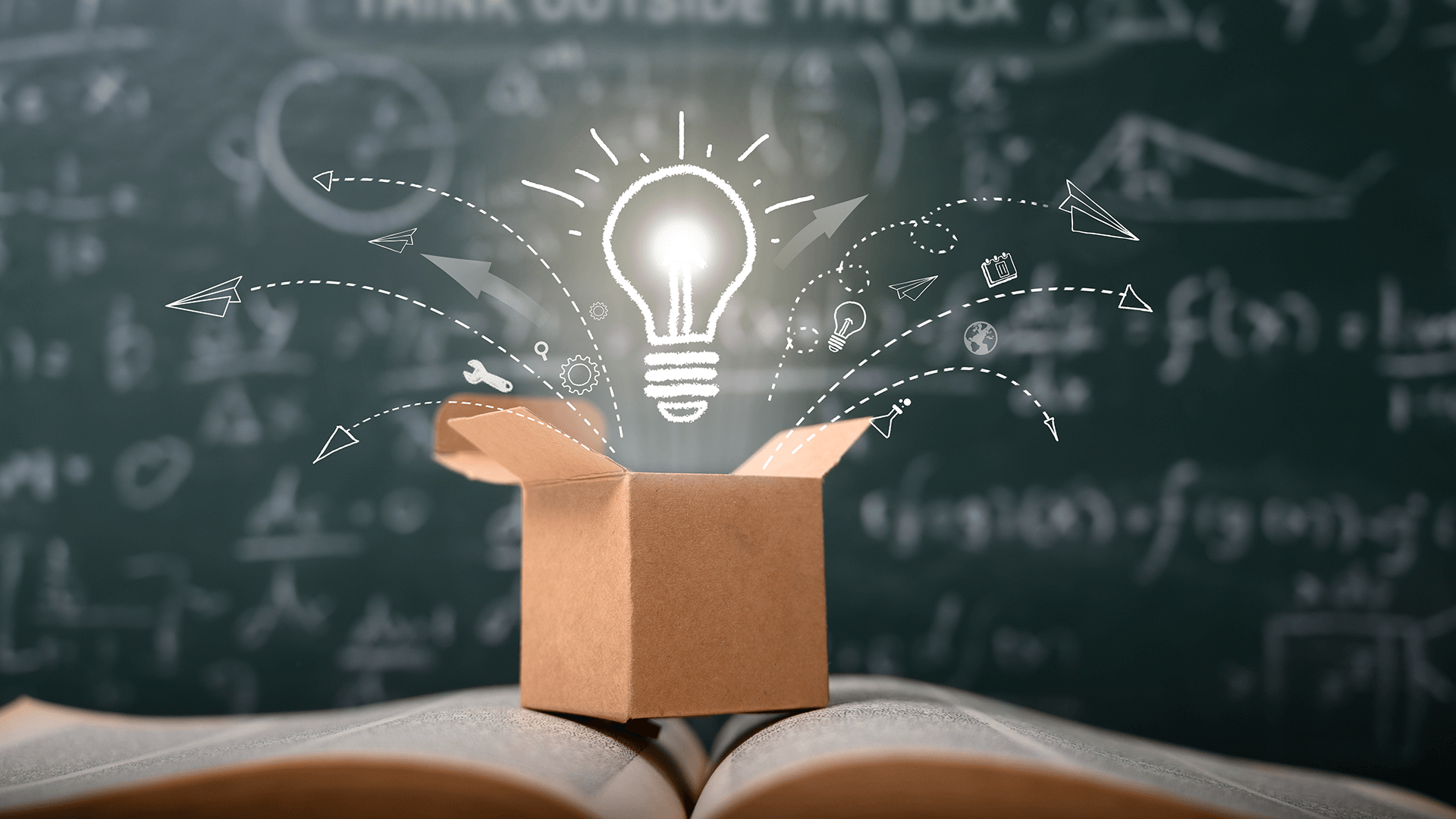We found 20 results that contain "category 1"
Posted on: #iteachmsu


Posted by
over 4 years ago
Critical Component #1: Honoring Student Experience
When asking students to explore issues of personal and social identity, teachers must provide safe spaces in which students are seen, valued, cared for, and respected. It is also important that students have opportunities to learn from one another’s varied experiences and perspectives. To create this learning environment, teachers need to skillfully draw on student experiences to enrich the curriculum.
When asking students to explore issues of personal and social identity, teachers must provide safe spaces in which students are seen, valued, cared for, and respected. It is also important that students have opportunities to learn from one another’s varied experiences and perspectives. To create this learning environment, teachers need to skillfully draw on student experiences to enrich the curriculum.
Posted on: #iteachmsu


Posted by
over 4 years ago
1.Self-Correction Opportunities
Students use calculators or a key provided by the teacher to check their answers.
2.Learning Games
Students play board games that reinforce skills such as sight vocabulary, phonics, grammar rules, and basic math facts.
For example, Bingo can be used to review basic facts and concepts. Students who require more immediate feedback and recognition of their efforts might begin with a Bingo board that has only
three cells across and three cells down.Any related ref
Students use calculators or a key provided by the teacher to check their answers.
2.Learning Games
Students play board games that reinforce skills such as sight vocabulary, phonics, grammar rules, and basic math facts.
For example, Bingo can be used to review basic facts and concepts. Students who require more immediate feedback and recognition of their efforts might begin with a Bingo board that has only
three cells across and three cells down.Any related ref
Posted on: #iteachmsu



Posted by
over 4 years ago

1. View the recorded webinar “Assessing Habits, Skills, and Dispositions: A Method”:
2, Choose what you will be assessing:
3. Does your school or district require a specific set of habits, skills, and dispositions (for example, 21st Century Skills or Essential Skills and Dispositions)? If so, choose at least one habit, skill, or disposition from the required set. If no particular set is required, choose one of the habits, skills, and dispositions from the four discussed in the webinar.
2, Choose what you will be assessing:
3. Does your school or district require a specific set of habits, skills, and dispositions (for example, 21st Century Skills or Essential Skills and Dispositions)? If so, choose at least one habit, skill, or disposition from the required set. If no particular set is required, choose one of the habits, skills, and dispositions from the four discussed in the webinar.
Assessing Learning
Posted on: #iteachmsu


Posted by
almost 5 years ago
Science, technology and innovation each represent a successively larger category of activities which are highly interdependent but distinct. Science contributes to technology in at least six ways: (1) new knowledge which serves as a direct source of ideas for new technological possibilities; (2) source of tools and techniques for more efficient engineering design and a knowledge base for evaluation of feasibility of designs; (3) research instrumentation, laboratory techniques and analytical methods used in research that eventually find their way into design or industrial practices, often through intermediate disciplines; (4) practice of research as a source for development and assimilation of new human skills and capabilities eventually useful for technology; (5) creation of a knowledge base that becomes increasingly important in the assessment of technology in terms of its wider social and environmental impacts; (6) knowledge base that enables more efficient strategies of applied research, development, and refinement of new technologies.
Disciplinary Content
Posted on: #iteachmsu



Posted by
almost 5 years ago

Science, technology and innovation each represent a successively larger category of activities which are highly interdependent but distinct. Science contributes to technology in at least six ways: (1) new knowledge which serves as a direct source of ideas for new technological possibilities; (2) source of tools and techniques for more efficient engineering design and a knowledge base for evaluation of feasibility of designs; (3) research instrumentation, laboratory techniques and analytical methods used in research that eventually find their way into design or industrial practices, often through intermediate disciplines; (4) practice of research as a source for development and assimilation of new human skills and capabilities eventually useful for technology; (5) creation of a knowledge base that becomes increasingly important in the assessment of technology in terms of its wider social and environmental impacts; (6) knowledge base that enables more efficient strategies of applied research, development, and refinement of new technologies.
Posted on: #iteachmsu



Posted by
almost 5 years ago

Science, technology and innovation each represent a successively larger category of activities which are highly interdependent but distinct. Science contributes to technology in at least six ways: (1) new knowledge which serves as a direct source of ideas for new technological possibilities; (2) source of tools and techniques for more efficient engineering design and a knowledge base for evaluation of feasibility of designs; (3) research instrumentation, laboratory techniques and analytical methods used in research that eventually find their way into design or industrial practices, often through intermediate disciplines; (4) practice of research as a source for development and assimilation of new human skills and capabilities eventually useful for technology; (5) creation of a knowledge base that becomes increasingly important in the assessment of technology in terms of its wider social and environmental impacts; (6) knowledge base that enables more efficient strategies of applied research, development, and refinement of new technologies.
https://iteach-testing.venturit.org/home/home_feed
https://iteach-testing.venturit.org/home/home_feed
Posted on: #iteachmsu



Posted by
almost 2 years ago

Stage 1: Planning and Requirement Analysis
Requirement analysis is the most important and fundamental stage in SDLC. It is performed by the senior members of the team with inputs from the customer, the sales department, market surveys and domain experts in the industry. This information is then used to plan the basic project approach and to conduct product feasibility study in the economical, operational and technical areas.
Planning for the quality assurance requirements and identification of the risks associated with the project is also done in the planning stage. The outcome of the technical feasibility study is to define the various technical approaches that can be followed to implement the project successfully with minimum risks.
Stage 2: Defining Requirements
Once the requirement analysis is done the next step is to clearly define and document the product requirements and get them approved from the customer or the market analysts. This is done through an SRS (Software Requirement Specification) document which consists of all the product requirements to be designed and developed during the project life cycle.
Stage 3: Designing the Product Architecture
SRS is the reference for product architects to come out with the best architecture for the product to be developed. Based on the requirements specified in SRS, usually more than one design approach for the product architecture is proposed and documented in a DDS - Design Document Specification.
This DDS is reviewed by all the important stakeholders and based on various parameters as risk assessment, product robustness, design modularity, budget and time constraints, the best design approach is selected for the product.
A design approach clearly defines all the architectural modules of the product along with its communication and data flow representation with the external and third party modules (if any). The internal design of all the modules of the proposed architecture should be clearly defined with the minutest of the details in DDS.
Stage 4: Building or Developing the Product
In this stage of SDLC the actual development starts and the product is built. The programming code is generated as per DDS during this stage. If the design is performed in a detailed and organized manner, code generation can be accomplished without much hassle.
Developers must follow the coding guidelines defined by their organization and programming tools like compilers, interpreters, debuggers, etc. are used to generate the code. Different high level programming languages such as C, C++, Pascal, Java and PHP are used for coding. The programming language is chosen with respect to the type of software being developed.
Stage 5: Testing the Product
This stage is usually a subset of all the stages as in the modern SDLC models, the testing activities are mostly involved in all the stages of SDLC. However, this stage refers to the testing only stage of the product where product defects are reported, tracked, fixed and retested, until the product reaches the quality standards defined in the SRS.
Stage 6: Deployment in the Market and Maintenance
Once the product is tested and ready to be deployed it is released formally in the appropriate market. Sometimes product deployment happens in stages as per the business strategy of that organization. The product may first be released in a limited segment and tested in the real business environment (UAT- User acceptance testing).
Then based on the feedback, the product may be released as it is or with suggested enhancements in the targeting market segment. After the product is released in the market, its maintenance is done for the existing customer base.
Requirement analysis is the most important and fundamental stage in SDLC. It is performed by the senior members of the team with inputs from the customer, the sales department, market surveys and domain experts in the industry. This information is then used to plan the basic project approach and to conduct product feasibility study in the economical, operational and technical areas.
Planning for the quality assurance requirements and identification of the risks associated with the project is also done in the planning stage. The outcome of the technical feasibility study is to define the various technical approaches that can be followed to implement the project successfully with minimum risks.
Stage 2: Defining Requirements
Once the requirement analysis is done the next step is to clearly define and document the product requirements and get them approved from the customer or the market analysts. This is done through an SRS (Software Requirement Specification) document which consists of all the product requirements to be designed and developed during the project life cycle.
Stage 3: Designing the Product Architecture
SRS is the reference for product architects to come out with the best architecture for the product to be developed. Based on the requirements specified in SRS, usually more than one design approach for the product architecture is proposed and documented in a DDS - Design Document Specification.
This DDS is reviewed by all the important stakeholders and based on various parameters as risk assessment, product robustness, design modularity, budget and time constraints, the best design approach is selected for the product.
A design approach clearly defines all the architectural modules of the product along with its communication and data flow representation with the external and third party modules (if any). The internal design of all the modules of the proposed architecture should be clearly defined with the minutest of the details in DDS.
Stage 4: Building or Developing the Product
In this stage of SDLC the actual development starts and the product is built. The programming code is generated as per DDS during this stage. If the design is performed in a detailed and organized manner, code generation can be accomplished without much hassle.
Developers must follow the coding guidelines defined by their organization and programming tools like compilers, interpreters, debuggers, etc. are used to generate the code. Different high level programming languages such as C, C++, Pascal, Java and PHP are used for coding. The programming language is chosen with respect to the type of software being developed.
Stage 5: Testing the Product
This stage is usually a subset of all the stages as in the modern SDLC models, the testing activities are mostly involved in all the stages of SDLC. However, this stage refers to the testing only stage of the product where product defects are reported, tracked, fixed and retested, until the product reaches the quality standards defined in the SRS.
Stage 6: Deployment in the Market and Maintenance
Once the product is tested and ready to be deployed it is released formally in the appropriate market. Sometimes product deployment happens in stages as per the business strategy of that organization. The product may first be released in a limited segment and tested in the real business environment (UAT- User acceptance testing).
Then based on the feedback, the product may be released as it is or with suggested enhancements in the targeting market segment. After the product is released in the market, its maintenance is done for the existing customer base.
Disciplinary Content
Posted on: #iteachmsu



Posted by
over 4 years ago

Identify a student with a disability in your classroom. Specifically, identify a student who has difficulty in a typical classroom setting demonstrating knowledge. For example, the student might not be able to respond through typical response formats like written tests. To protect the privacy of your student, please use a first name only, or else use an alias.
Describe the student you selected, making sure to include:
Basic details about the student, including age, gender, first language, etc.
A description of the student's disability category and the barrier that interferes with the student’s ability to demonstrate learning
At least three of the student’s strengths
What the student is having difficulty with (such as verbal communication, handwriting, maintaining focus)
Describe the student you selected, making sure to include:
Basic details about the student, including age, gender, first language, etc.
A description of the student's disability category and the barrier that interferes with the student’s ability to demonstrate learning
At least three of the student’s strengths
What the student is having difficulty with (such as verbal communication, handwriting, maintaining focus)
Disciplinary Content
